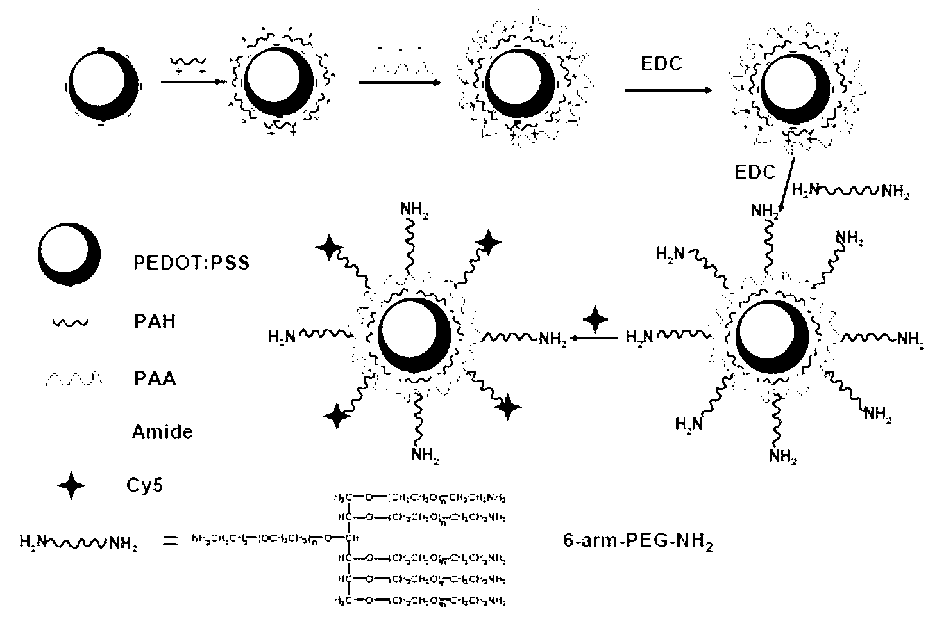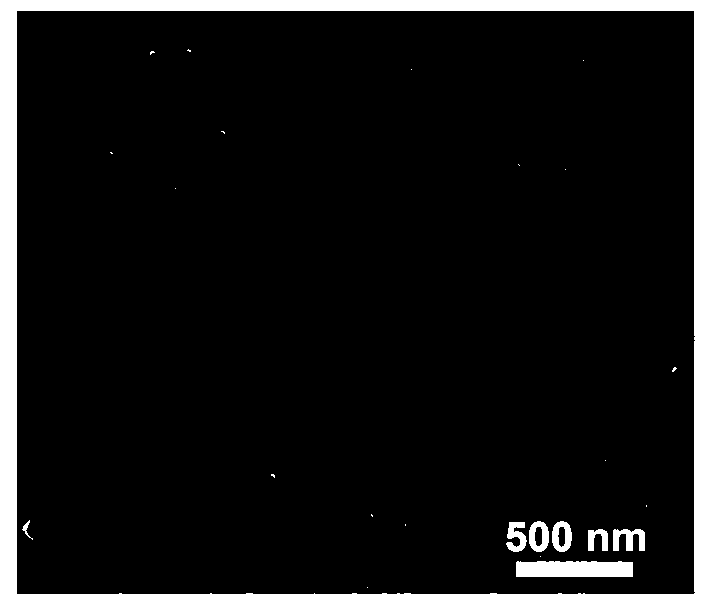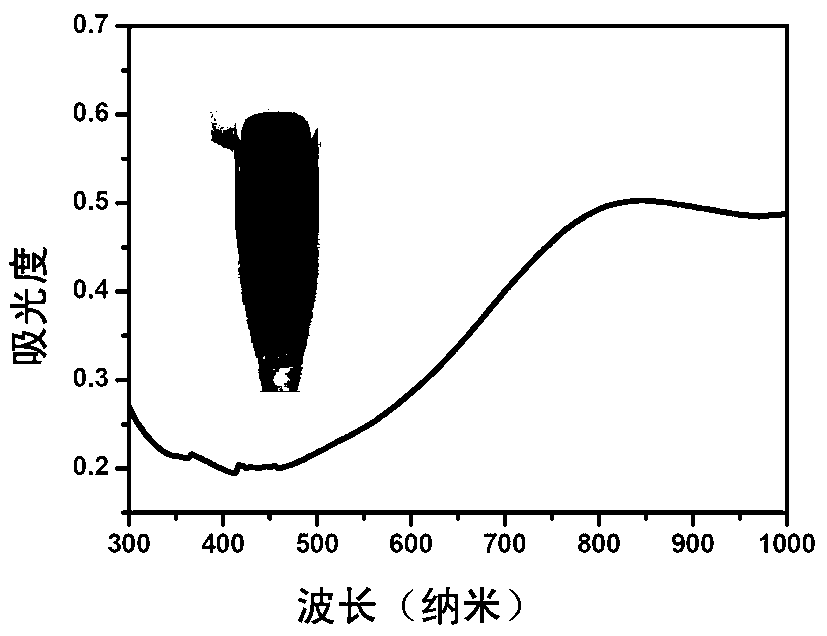Electrically conductive macromolecular nano-material and application of electrically conductive macromolecular nano-material
A technology of conductive polymers and nanomaterials, applied in the direction of wave energy or particle radiation treatment materials, medical preparations containing active ingredients, organic dyes, etc., to achieve simple preparation methods, good optical absorption properties, and remarkable effects
- Summary
- Abstract
- Description
- Claims
- Application Information
AI Technical Summary
Problems solved by technology
Method used
Image
Examples
Embodiment 1
[0034] Example 1: Preparation of PEG-modified PEDOT:PSS conductive polymer nanomaterials:
[0035] Such as figure 1 As shown, the preparation of PEG-modified polymer nanomaterials based on PEDOT:PSS, through the interaction between charges, self-assemble PAH, PAA and PEG polymers layer by layer, specifically includes the following steps:
[0036] (1) Using commercial PEDOT:PSS as the starting material (CLEVIOS PH1000), take 5mL of PEDOT:PSS polymer solution (1mg / mL), put it into a dialysis bag with a molecular weight of 14000 for 24h, change the water every 5h, and finally Get 10 mL of PEDOT:PSS solution and store it in a 4°C refrigerator for later use. Characterization (dynamic light scattering and zeta potential) is then performed.
[0037](2) Take 4mL PAH (MW=14000~16000) polymer solution (1mg / mL) in a serum bottle, and slowly add 4mL of the dialyzed PEDOT:PSS polymer solution (0.5 mg / mL) dropwise under ultrasonic conditions. mL). Continue to sonicate for 0.5 h after t...
Embodiment 2
[0041] Example 2: fluorescent dye Cy5 labeled PEDOT:PSS conductive polymer nanomaterial
[0042] Take 4 mL of PEDOT:PSS-PEG polymer solution (0.5 mg / mL) in a serum bottle, slowly add fluorescent labeling molecule Cy5, and add 20 mg of EDC, adjust the pH to 7.4, and stir for 12 hours. After the reaction is over, wash three times with an ultrafiltration tube (molecular weight 10KD) to remove excess reaction by-products such as Cy5, EDC, and PBS. Concentrate to 4 mL to obtain Cy5-labeled PEDOT:PSS polymer solution (0.5 mg / mL), that is, PEDOT:PSS-PEG-Cy5. Then, characterization (UV absorption and fluorescence) was performed.
[0043] The result is as Figure 5 as shown, Figure 5 (a) is the UV absorption spectrum of Cy5-labeled PEDOT:PSS. It can be seen that there is still very good optical absorption in the near-infrared region (600-1000 nanometers), and there is a very obvious absorption at 660 nanometers, which is mainly due to the fact that Cy5 is connected to the PEDOT:PS...
Embodiment 3
[0044] Example 3: Blood circulation time of Cy5-labeled conductive polymer PEDOT:PSS in vivo
[0045] Blood circulation behavior test of Cy5-labeled conductive polymer PEDOT:PSS injected into mice through tail vein: Cy5-labeled conductive polymer PEDOT:PSS was injected into mice through tail vein, the injection dose was 10mg / kg, according to About 10 μl of fresh blood was taken from the mouse vein at different time points, weighed and dissolved in 400 μl of blood lysate (1% SDS, 1% Triton-100, 40mM Tris buffer solution). Measure the blood circulation time of PEDOT:PSS in the body.
[0046] The result is as Figure 6 As shown, the blood circulation curve fits the second-order model. The first half-life time is: (t 1 / 2 )=4.75 ± 2.21 min (t 1 / 2 ), the second half-life time is: (t 1 / 2 ’)= 99.63 ± 15.28 min (t 1 / 2 '). After 48 hours, a relatively strong Cy5-labeled PEDOT:PSS fluorescence signal was still observed in the blood, which provided an opportunity for the nanomateri...
PUM
 Login to View More
Login to View More Abstract
Description
Claims
Application Information
 Login to View More
Login to View More - R&D
- Intellectual Property
- Life Sciences
- Materials
- Tech Scout
- Unparalleled Data Quality
- Higher Quality Content
- 60% Fewer Hallucinations
Browse by: Latest US Patents, China's latest patents, Technical Efficacy Thesaurus, Application Domain, Technology Topic, Popular Technical Reports.
© 2025 PatSnap. All rights reserved.Legal|Privacy policy|Modern Slavery Act Transparency Statement|Sitemap|About US| Contact US: help@patsnap.com



